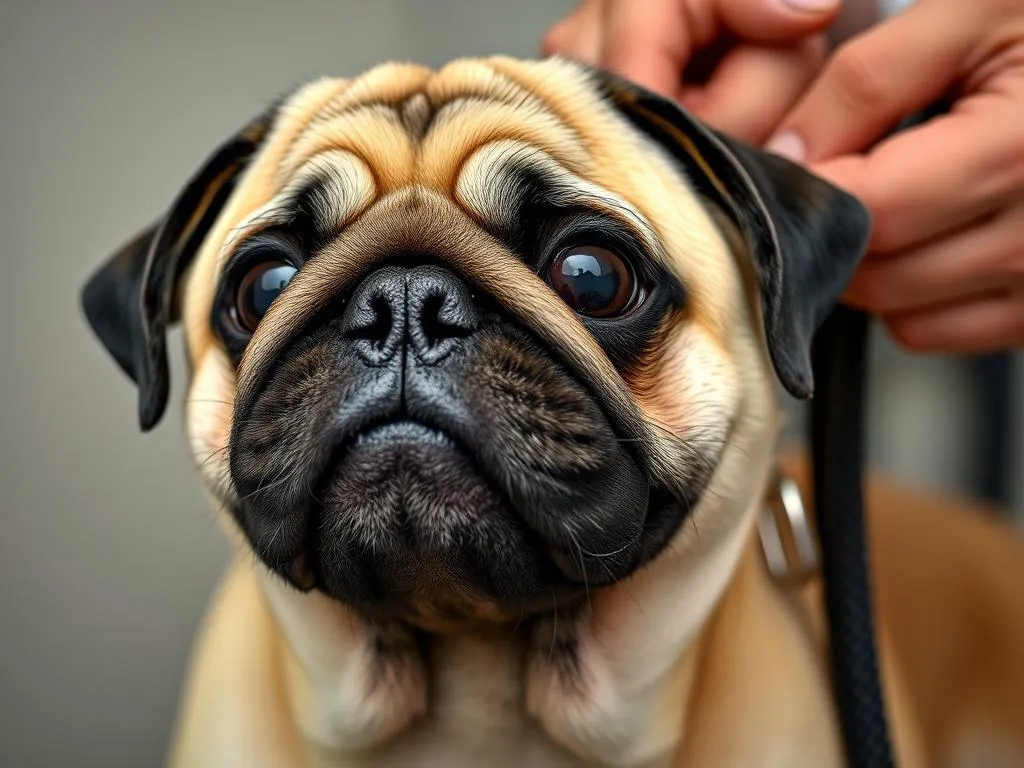
Introduction
Grooming is an essential part of maintaining your dog’s overall health and well-being. For Pugs, regular grooming not only keeps them looking their best but also helps to prevent various health issues that can arise from neglect. Pugs are a unique breed known for their charming personalities and distinctive physical features, such as their wrinkled faces and compact bodies. However, they are also prone to certain health problems, making grooming even more crucial. In this comprehensive guide, we will explore how to groom a Pug effectively, ensuring your furry friend remains healthy and happy.
Understanding Pugs
Characteristics of Pugs
Pugs are small, lively dogs that typically weigh between 14 to 18 pounds. They have a short, sturdy build and a distinctive wrinkled face, which gives them a unique appearance. Their coat is smooth and glossy, often found in colors like fawn, black, or silver. Pugs are known for their friendly and affectionate nature, making them excellent companions. They are playful, social, and tend to get along well with children and other pets.
Common Health Issues in Pugs
While Pugs are adorable, they are also susceptible to several health concerns:
-
Breathing Problems: Due to their brachycephalic (flat-faced) structure, Pugs often suffer from breathing difficulties. This condition, known as brachycephalic syndrome, can lead to serious health issues if not managed properly.
-
Skin Conditions: Pugs have skin folds that can trap moisture and debris, leading to skin infections like fold dermatitis. Regular grooming helps keep these areas clean and dry.
-
Eye Problems: Pugs are prone to eye issues, including a prolapsed nictitating membrane (cherry eye). Regular eye care can help detect problems early and keep their eyes healthy.
Importance of Grooming for Pugs
Health Benefits
Grooming plays a vital role in your Pug’s health. Regular grooming can help prevent skin infections and irritations by keeping their skin and coat clean. It also allows you to check for any unusual lumps, bumps, or changes in their skin condition, facilitating early detection of potential health issues.
Social and Psychological Benefits
Grooming provides an opportunity for bonding between you and your Pug. This shared activity can strengthen your relationship and make your dog feel more secure and loved. Furthermore, grooming can reduce anxiety and stress in dogs, contributing to a calmer and happier demeanor.
Grooming Tools and Supplies
Essential Grooming Tools
To groom your Pug effectively, you’ll need the right tools:
-
Brushes: A soft-bristled brush or a rubber grooming mitt works well for Pugs. These help remove loose hair and keep their coat shiny.
-
Combs: A fine-toothed comb is essential for removing mats in the skin folds.
-
Nail Clippers: Use small, scissor-style nail clippers designed for small breeds to safely trim your Pug’s nails.
Cleaning Supplies
In addition to grooming tools, you’ll also need cleaning supplies:
-
Dog Shampoo: Choose a hypoallergenic dog shampoo to avoid skin irritation.
-
Ear Cleaning Solution: A gentle ear cleaner helps prevent infections.
-
Toothbrush and Dog Toothpaste: Maintaining dental hygiene is crucial for your Pug’s overall health.
Step-by-Step Guide to Grooming a Pug
Preparing for Grooming
Before you start grooming, set up a comfortable area with good lighting. Gather all your tools and supplies to ensure everything is within reach. It’s essential to make grooming a positive experience for your Pug, so be sure to have treats on hand for positive reinforcement.
Brushing Your Pug
Pugs shed year-round, so regular brushing is necessary to manage loose fur. Aim to brush your Pug at least once a week, but during shedding seasons, you may need to do it more frequently. Use gentle strokes to avoid irritating their skin, and pay special attention to the folds where hair can accumulate.
Bathing Your Pug
Pugs should be bathed every 4 to 6 weeks, depending on their activity level and how dirty they get. Use lukewarm water and a hypoallergenic dog shampoo to wash them. Start by wetting their coat thoroughly, then apply the shampoo, lathering it gently. Rinse thoroughly to avoid any residue, which can irritate their skin. For drying, use a towel to absorb excess moisture, and if you use a blow dryer, ensure it’s on a low heat setting to avoid burns.
Cleaning Pug’s Ears and Eyes
Regular ear cleaning is crucial for Pugs to prevent infections. Check their ears weekly for dirt or wax buildup. Use a cotton ball or soft cloth with ear cleaning solution to gently wipe the inside of the ear, without inserting anything into the canal.
For eye care, Pugs often develop tear stains. Use a damp cloth to gently wipe away any discharge from the corners of their eyes. If you notice excessive tearing, consult your veterinarian.
Nail Care for Pugs
Regular nail trimming is essential for your Pug’s health, as overgrown nails can cause pain and mobility issues. Aim to trim your Pug’s nails every 3 to 4 weeks. Hold the paw firmly and trim just the tip of the nail, avoiding the quick (the pink part inside the nail) to prevent bleeding. If you’re unsure, consult your vet for guidance.
Skin Fold Care
Pugs have distinctive skin folds that require attention. These folds can trap moisture and debris, leading to infections if not cleaned regularly. After bathing, gently clean the folds with a damp cloth, ensuring they are dry afterward. You can also use a medicated powder to keep the area dry and reduce the risk of irritation.
Dealing with Grooming Challenges
Pug’s Behavior During Grooming
Some Pugs may resist grooming, displaying behavior issues such as squirming or barking. If your Pug is anxious, try to create a calming environment by speaking softly and offering treats. Gradually introduce grooming tools to familiarize them with the process.
When to Seek Professional Help
If your Pug is particularly anxious or if you notice severe matting, it might be time to consult a professional groomer. Signs that indicate a need for professional help include excessive dirt buildup, skin irritations, or when you feel uncomfortable performing any grooming tasks.
Maintaining Overall Health Through Grooming
Regular Check-Ups
Regular veterinary visits are crucial for your Pug’s health. Grooming can help you notice potential health issues early on, making it easier for your vet to address them. During these visits, your vet can also provide advice on diet, vaccinations, and grooming needs.
Diet and Nutrition
A well-balanced diet is essential for maintaining your Pug’s coat and skin health. Choose high-quality dog food that meets their nutritional needs. Omega fatty acids can help support a healthy coat and skin, so consider adding supplements if recommended by your vet.
Conclusion
In conclusion, regular grooming is vital for your Pug’s health and happiness. By establishing a consistent grooming routine, you can help prevent health issues and strengthen the bond between you and your furry friend. Remember, grooming should be a positive experience, so always use treats and praise to encourage your Pug. With the right tools and techniques, grooming can be a rewarding experience for both you and your Pug.









